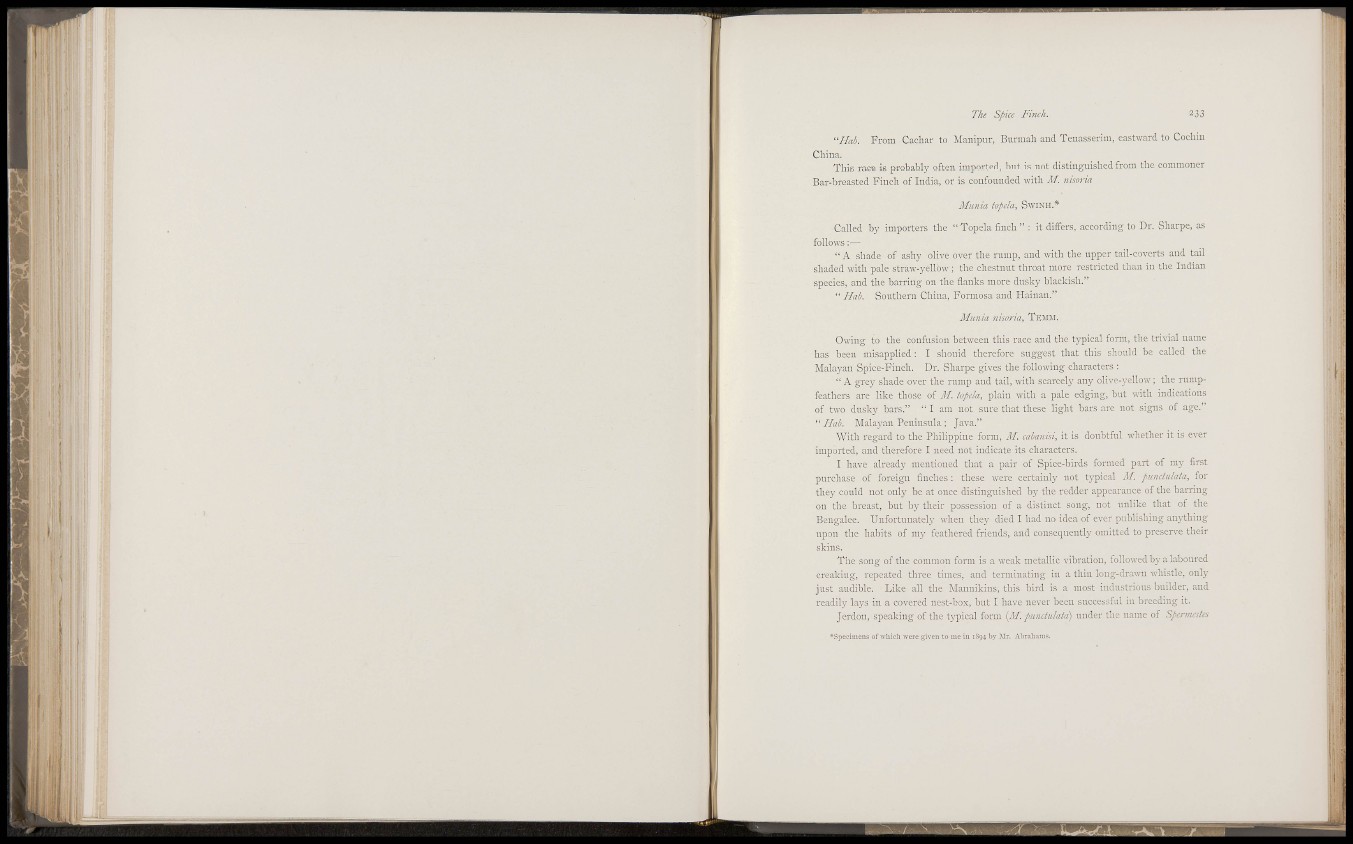
líl i,i
.1; 1 .•(1 : I (,|
U ' '
É
J ,
Í-1
i
!
i,, i
I:-
ü
I í I : i
' ! '
The Spice Finch. 233
"liab. From Cachar to Maiiipiir, Burmali and Tenasserim, eastward to Cochin
China.
This race is probably often imported, but is not distinguished from the commoner
Bar-breasted Finch of India, or is confounded with M. niwria
Mimici tópela, SwiNH.*
Called by importers the "Tópela finch " : it differs, according to Dr. Sharpc, as
follows : —
" A shade of ashy olive over the rump, and with the upper tail-coverts and tail
shaded with pale straw-yellow ; the chestnut throat more restricted than in the Indian
species, and the barring on the flanks more dusky blackish."
" Hab. Southern China, Formosa and Hainan."
Munia nisoria, TEMM.
Owing to the confusion between this race and the typical form, the trivial name
has been misapplied : I should therefore suggest that this should be called the
Malayan Spice-Finch. Dr. Sharpe gives the following characters :
" A grey shade over the rump and tail, with scarcely any olive-yellow; the rumpfeathers
are like those of M. tópela, plain with a pale edging, but with indications
of two dusky bars." "I am not sure that these light bars are not signs of age."
" Hab. Malayan Peninsula ; Java."
With regard to the Philippine form, M. cabanisi, it is doubtful whether it is ever
imported, and therefore I need not indicate its characters.
I have already mentioned that a pair of Spice-birds formed part of my first
purchase of foreign finches : these were certainly not typical M. punctulata, for
they could not only be at once distinguished by the redder appearance of the barring
on the breast, but by their possession of a distinct song, not unlike that of the
Bengalee. Unfortunately when they died I had no idea of ever publishing anything
upon the habits of my feathered friends, and consequently omitted to preserve their
skins.
The song of the common form is a weak metallic vibration, followed by a laboured
creaking, repeated three times, and terminating in a thin long-drawn whistle, only
just audible. Like all the Maunikius, this bird is a most industrious builder, and
readily lays in a covered nest-box, but I have never been successful in breeding it.
Jerdou, speaking of the t3'pieal form (/]/. punctulata) under the name of Sperincstes
•*Speciinens of wliicli were given to nie in 1894 by Mr. Abraliams.
! •